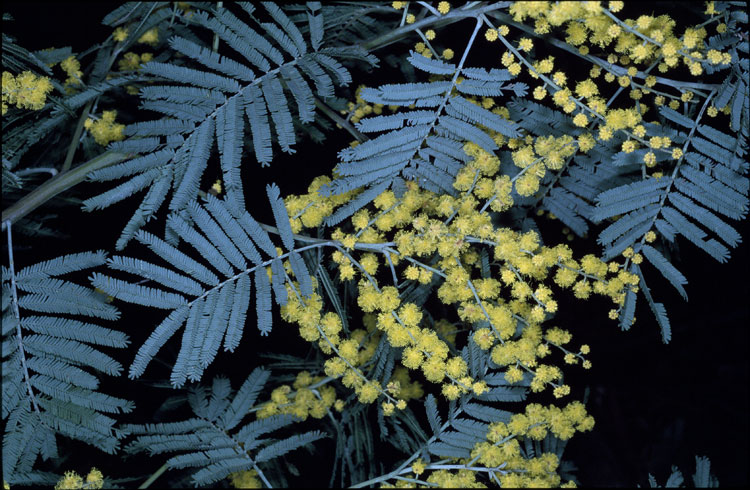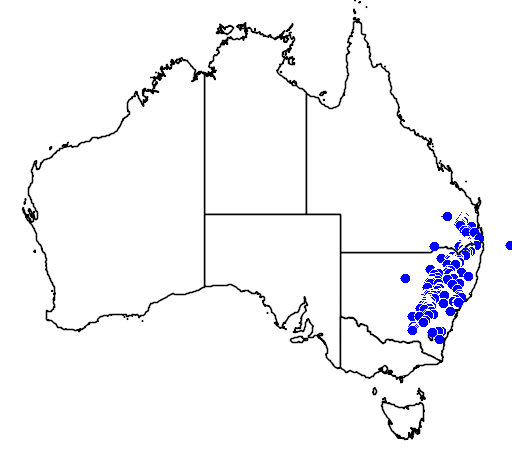Description
Common names
Northern Silver Wattle.
Scientific names
Acacia leucoclada, Racosperma leucocladum.
Family
Mimosaceae.
Genus
Acacia.
Name origin
From Greek leucos, white, and clados, young branch or shoot, referring to the whitish young shoots.
Rainfall
400-900mm.
Growth rate
Fast.
Growth height
4-18m.
Presence in Australia
Noted in the areas Lower Sandy, Yerong Creek and The Rock-Henty-Milbrulong.
This specie has been identified in the following Australian states: Qld, NSW, ACT.
Habitat
Various soils, usually in sclerophyll communities.
Habit
Erect tree, 4-18m high. Dark brown to black bark and silvery feathery foliage.
Similar species
Distinguish from Silver Wattle (A. dealbata) by glands between pinnae pairs. Silver Wattle has glands at each pinnae pair.
Site preference
Well-drained soil. Frost hardy.
Characteristics
Fast-growing when young.
Flowering
Golden-yellow, Jul-Oct.
Seed collection
Early summer, depending on season. Monitor closely, as seeds dropped soon after maturity.
Propagation
From scarified seed. Pour boiling water over seed and soak for several hours before sowing.
Regeneration
From seed or suckers, particularly after fire, ploughing or ripping. Often forms fire-induced thickets.
Shade and shelter
Useful fast-growing species for low to medium-level cover in windbreaks. Suckering ensures cover beyond the life of individual plants. Fast growth and ability to improve soil fertility make it an ideal "nurse crop", and suitable for use with slow growing eucalypts or other long-lived species in mixed woodlots.
Land protection
Excellent for gully erosion control. Provides fast cover through its growth and suckering. Legume, improves soil fertility through "fixing" nitrogen.
Wildlife
Excellent habitat. Attracts seed-eating birds including rosellas and cockatoos, and insect-eating birds including the Scrubwren. Many species of beetle and their larvae feed on foliage. Ants seek funicles (ovule or seed stalks) of fallen seed. Crimson Rosellas eat half-ripe seed pods. White-plumed Honeyeater sometimes nests in foliage. Critical habitat for gliders and possums, and gum a favoured food of the Sugar Glider and Squirrel Glider. Provides structural diversity for nesting and foraging.
Ornamental
Responds to water during dry periods.



